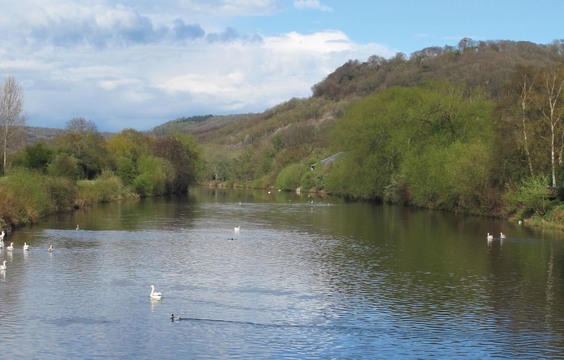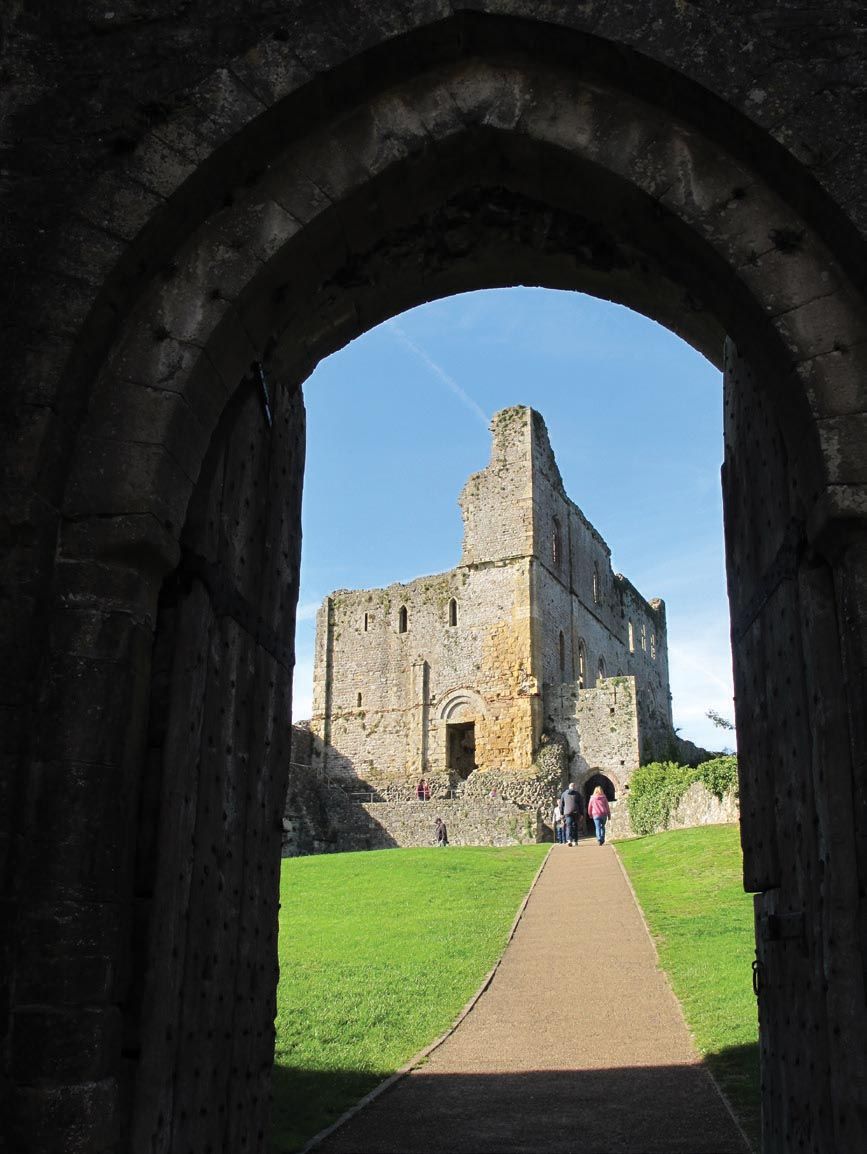
The River Wye, Wales.Sian Ellis.
A day well spent! Siân Ellis visits The Lower Wye Valley in Wales and is endeared by the scenery, history, and lunch options.
The Lower Wye Valley in Wales – connecting the market towns of Chepstow and Monmouth via Tintern Abbey – offers a wonderfully scenic 17-mile riverside drive.
Peaceful now, the area is nevertheless scattered with landmarks that remind you this was once wild frontier country: King Offa’s 8th-century earthwork dyke that effectively divided Wales from England begins near Chepstow, while the powerful Norman Marcher (border) lords have left a chain of castles that held the native Welsh in check.
Later, from the 18th century, the attractions of the Wye Valley became a magnet for the Picturesque Movement and Romantic poets, and the birthplace of the first British package holidays. The River Wye, threading everything together and leading you on, was voted the nation’s favourite river in recent times. Here’s a Day Well Spent to rival any.
Chepstow: Gateway to Wales
Chepstow is a hop across the Severn Bridge into Wales from English honey-pots like Bath or historic Bristol. Then head straight for the bottom of town and the star attraction: Chepstow Castle, built by the Normans shortly after the Battle of Hastings in 1066, is the country’s oldest stone castle and an imposing presence on the cliffs above the River Wye to this day.
A view from the River Wye of Chepstow Castle.
“It was a big propaganda statement,” a medieval costumed Neil Eddiford told me on a guided tour, as he unpacked tales of the fortress striking fear into locals while giving a base for further incursions into Wales.
With supplies from the coast easily transported up the River Wye, the site was perfect for a stronghold and successive owners added to its might and splendour, from the daunting double-towered gatehouse to13th-century luxury apartments.
In between demonstrating longbow and sword skills, Neil revealed that, for him, “the greatest treasure in the castle” is what turns out to be Europe’s oldest castle doors, constructed no later than the 1190s; just imagine the fists that have banged on the criss-cross patterned wood through 800 years.
Once you’ve had your fill of towering vistas over river and town, enjoy a morning coffee in one of Chepstow’s teashops or cafés. If you’ve time, also drop into Chepstow Museum in the 18th-century merchant’s house just across the road from the castle. Displays provide the port-and-trade back-story of this lively little market town and insights into the Wye Valley as a fashionable destination for early tourists.
Picturesque Tintern Abbey
From Chepstow, follow the A466 road for five miles as it shadows the River Wye and dives through woodland to Tintern Abbey, where man’s magnificent Gothic architecture is all the more dramatic for nature’s tree-clad gorge setting.
Built in 1131 under the patronage of Roger Bigod, Lord of Chepstow Castle, Tintern was among Britain’s earliest Cistercian foundations, the site chosen because it was “far from the concourse of men”. Although now a roofless shell of past glory – it was left to moulder after Henry VIII’s Dissolution of the Monasteries in 1536 – the abbey remains a good story of the monks’ daily round of worship and work. Quite what they would have made of their isolated haven becoming a tourist honey-trap is anyone’s guess.
It all started in the 18th century with the rise of the Picturesque Movement, which encouraged cultured gentlefolk to seek out the wild, romantic landscapes; ivy-strewn ruins were particularly popular as stimulants to “Pleasurable Melancholy”. Scenic boat trips from Ross-on-Wye to Tintern Abbey and Chepstow Castle became all the rage, popularised by William Gilpin’s bestselling tour guide, Observations on the River Wye (1782). With viewpoints, meal stops and selected ruins all pre-planned, Britain’s first package holidays had arrived. William Wordsworth celebrated the “sylvan Wye” in verse and JMW Turner came to sketch and paint.
Lunch options nowadays include The Anchor Inn, Abbey Mill, and a handful of riverside pubs. Then, driving on past quiet villages, try hard to believe that in the 18th and 19th centuries the valley heaved with boat building, iron, and tin works – such industrial activity was considered Picturesque too.
Monmouth heroes
Arriving in Monmouth, on the confluence of the rivers Wye and Monnow (hence the town’s name), you will find streetscapes peppered with historic buildings, from the unique 13th-century gatehouse on Monnow Bridge to Tudor, Georgian and Victorian gems.
“I’ll tell you, there is good men born at Monmouth”, Shakespeare has Fluellen declaim in King Henry V, and squeezed into the façade of the Shire Hall at the top of town you’ll find a statue of the warrior king. Henry, famously victorious at Agincourt (1415) thanks to his longbowmen, was born in 1387 at Monmouth Castle – you can see the scanty ruins just around the corner.
A second statue at the top of town pays tribute to another local hero, aviation and motoring pioneer Charles Rolls of Rolls-Royce renown, who made the first non-stop flight to France and back in 1910. More of his exploits are revealed in the Nelson Museum & Local History Centre on Priory Street: home also to a fascinating stash of Nelsoniana – personal letters to weapons – collected by Rolls’ mother and Nelson fan, Lady Llangattock.
Nelson, the hero of Trafalgar, ‘did’ the Wye Tour in 1802 and was treated to a gun salute from the Naval Temple (built to celebrate famous admirals and their victories) on The Kymin hill above Monmouth.
There, too, he breakfasted with Lady Hamilton in the Georgian Round House and enjoyed the Picturesque views. The unique Temple, eccentric Round House (National Trust), and vistas over Monmouth make a worthy finale to your day.
Staying longer?...
There’s plenty more to do in Chepstow and Monmouth, and you can continue your Wye Valley Tour up to the spectacular Symonds Yat Rock viewpoint over the river. Maybe enjoy a pleasure boat trip like Picturesque tourists, or cross from one bank of the river to the other on the historic hand-pulled Symonds Yat rope ferries – with refreshments (and accommodation) available either side at The Saracens Head and the 15th-century Ye Old Ferrie Inn.
Further afield, fairytale Castell Coch (Red Castle) and Wales’ capital city Cardiff beckon. Or head for the Black Mountains and Brecon Beacons.





Comments